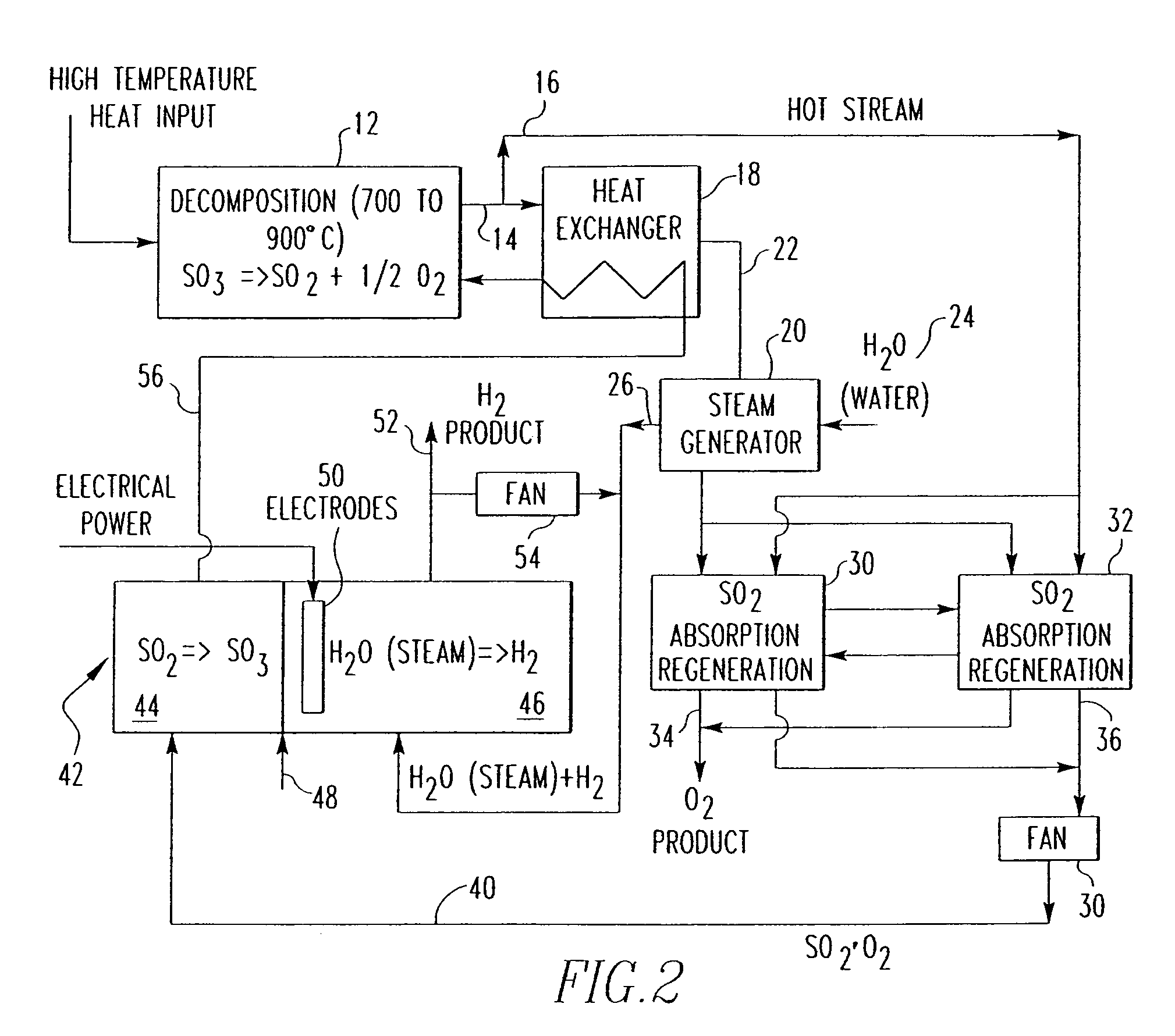Gas phase electrolyzer process for producing hydrogen
a gas phase electrolyzer and hydrogen technology, applied in the direction of energy input, liquid/fluent solid measurement, peptides, etc., can solve the problems of increasing the energy level required to perform the process, significant energy requirements, and sulfuric compounds utilized in the process require shifts
- Summary
- Abstract
- Description
- Claims
- Application Information
AI Technical Summary
Benefits of technology
Problems solved by technology
Method used
Image
Examples
Embodiment Construction
[0024]One embodiment of a hydrogen producing sulfur cycle utilizing the oxidation of sulfur dioxide to sulfur trioxide in their gaseous phases is shown in FIG. 2. Sulfur trioxide (SO3) is decomposed under elevated temperatures to sulfur dioxide (SO2) and oxygen (O2), under the reaction SO3→SO2+½ O2, in a decomposition reactor as shown in reference number 12. Pressure for this step is kept at normal or slightly elevated pressures such that the sulfuric oxides stay in a gaseous state.
[0025]The thermal energy required for this step is generally heat in a temperature range of about 600 and 1000° C., preferably in the range of about 700 to 900° C. The thermal energy may be provided by a heat source, for example, a nuclear reactor. In additional embodiments, however, any other sources known in the art for thermal energy production in excess of 600° C. may be used. For example, generators that utilize fossil fuels such as coal or oil may be used to derive thermal energy to decompose the su...
PUM
| Property | Measurement | Unit |
|---|---|---|
| temperature | aaaaa | aaaaa |
| temperatures | aaaaa | aaaaa |
| voltages | aaaaa | aaaaa |
Abstract
Description
Claims
Application Information
 Login to View More
Login to View More - R&D
- Intellectual Property
- Life Sciences
- Materials
- Tech Scout
- Unparalleled Data Quality
- Higher Quality Content
- 60% Fewer Hallucinations
Browse by: Latest US Patents, China's latest patents, Technical Efficacy Thesaurus, Application Domain, Technology Topic, Popular Technical Reports.
© 2025 PatSnap. All rights reserved.Legal|Privacy policy|Modern Slavery Act Transparency Statement|Sitemap|About US| Contact US: help@patsnap.com



